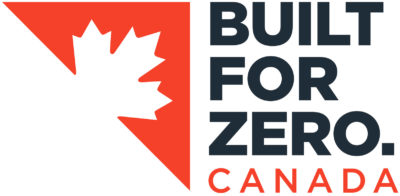20,000 Homes Campaign houses 21,254 of Canada’s most vulnerable homeless people. CAEH launches new national effort – Built for Zero Canada – to end chronic homelessness.
 Today the Canadian Alliance to End Homelessness launches a new national effort to end chronic homelessness after its 20,000 Homes Campaign successfully housed 21,254 of Canada’s most vulnerable homeless people.
Today the Canadian Alliance to End Homelessness launches a new national effort to end chronic homelessness after its 20,000 Homes Campaign successfully housed 21,254 of Canada’s most vulnerable homeless people.
Built for Zero Canada (BFZ-C) is an ambitious national change effort helping a core group of leading communities end chronic homelessness – a first step on the path to eliminating all homelessness in Canada.
“Homelessness is a crisis that has lost its sense of urgency” says Tim Richter, Canadian Alliance to End Homelessness President & CEO. “The 20,000 Homes Campaign created a sense of urgency in communities across the country and helped energize efforts to end homelessness.
“Most importantly our community partners ended homelessness for 21,254 people and we learned together what it really takes to end chronic homelessness. We’ll apply those lessons through Built for Zero Canada to help communities across Canada end chronic homelessness.”
BFZ-C uses a structured, supportive and data-driven approach that focuses on optimizing local homeless systems, accelerating the adoption of proven practices and driving continuous improvement.
“Communities are using real-time, person-specific data on everyone experiencing homelessness to build more coordinated homeless systems and reduce chronic homelessness,” says Marie Morrison, 20,000 Homes Campaign Director, and now Director of Built for Zero Canada. “This relentless data-driven performance improvement approach is getting results and showing that together, we can end chronic homelessness.”
The City of Kawartha Lakes and County of Haliburton, a region of 90,200 in central Ontario, is an example of the kind of success in ending chronic homelessness that’s possible. Kawartha Lakes and Haliburton have reduced chronic homelessness 51% in the last six months. Community leaders credit the 20,000 Homes Campaign for their progress.
“We wouldn’t be where we are without it,” says Michelle Corley, Program Supervisor, Housing Help Division, City of Kawartha Lakes, about joining the 20,000 Homes Campaign. “The resources and expertise we have available at our fingertips has been great. But also the peer support, the knowledge and experience sharing from other communities has been a huge support for us.”
Core elements of the 20,000 Homes Campaign and Built for Zero Canada are embedded in Canada’s new homelessness strategy, Reaching Home, which launches in April. The 20,000 Homes Campaign was supported by a grant from Employment and Social Development Canada.
“Community leadership, evidence-based decision making and building coordinated systems are at the heart of Reaching Home” says the Hon. Jean Yves Duclos, Minister of Families, Children and Social Development. “I want to thank CAEH and most importantly the communities of the 20,000 Homes Campaign for your efforts and congratulate you on your success.”
“We have learned a great deal from our partnership with you and look forward to working closely with you through the implementation of Reaching Home. Together I believe we can meet, and even go beyond the ambitious goals of Reaching Home to cut chronic homelessness in half across the country. Together we will continue to work towards our common vision of eliminating homelessness in Canada.”
For more information, visit bfzcanada.ca.
QUICK FACTS:
- An estimated 235,000 people experience homelessness every year in Canada. People experiencing chronic homelessness are deeply impoverished and typically suffer from a range of complex medical, mental health, addiction and trauma-related challenges.
- There are 38 communities participating in Built for Zero Canada (BFZ-C). Eleven of these communities have achieved quality By-Name Lists and all are working to strengthen or put in place Coordinated Access Systems. Two communities have achieved verifiable reductions in chronic homelessness.
- A By-Name List is a real-time list of all people experiencing homelessness in a community. A Coordinated Access System is a way for communities to design, streamline, and bring consistency to the process by which people experiencing homelessness access housing and services. Functional zero means a community has three or fewer people experiencing chronic homelessness over three months. The community works to sustain functional zero, drive for the complete elimination of chronic homelessness and move on to ending homelessness for other groups, ultimately ending homelessness for all.
- Under Reaching Home, communities will be expected to develop By-Name Lists of all people experiencing chronic homelessness, develop Coordinated Access Systems and implement the Homelessness Individuals and Families Information System (HIFIS). BFZ-C is supporting the work of its communities to develop these tools and implement HIFIS.
- BFZ-C is a part of the Canadian Alliance to End Homelessness. Founded in 2012, the CAEH leads a national movement of individuals, organizations and communities working together to end homelessness.
